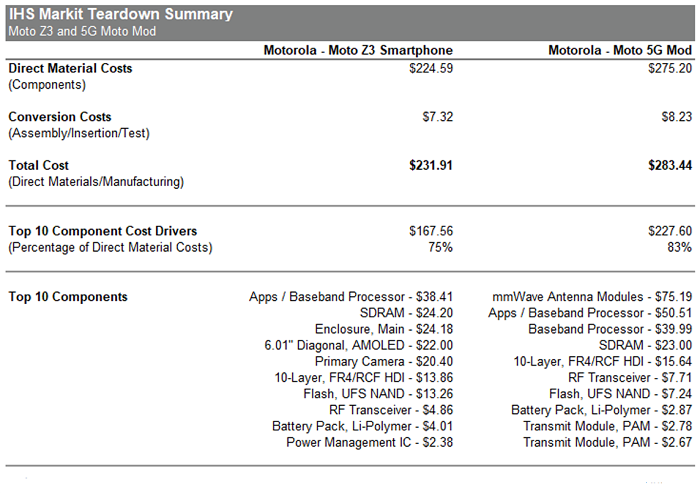By Majeed Ahmad, contributing writer
The millimeter-wave (mmWave) wireless technology — striving to reduce complexity and drive down costs — has become more viable with the availability of two 5G smartphones: Motorola’s Moto Z3 and 5G Moto Mod handsets sold by Verizon in the United States.
The mmWave radios deliver extremely fast data rates with speeds theoretically as high as 5 Gbits/s compared to just 100 Mbits/s to 200 Mbits/s in the current 4G LTE services. At the same time, however, mmWave’s coverage and range are constrained, which, in turn, calls for highly focused RF beams instead of RF propagation associated with cellular communications.

Take the 5G Mod smartphone, for instance, which contains an estimated $275.20 worth of electronic components and other materials. According to IHS Markit , it’s based on a duplicate application processor and a Qualcomm X50 5G modem. And Motorola has sourced the entire RF front end from Qualcomm, currently the only supplier capable of providing smartphone mmWave solutions.
What’s special about this mmWave RF subsystem? For a start, it’s capable of discerning clear signals from low-propagation millimeter waves. Otherwise, with a tiny wavelength, these wireless signals can be hard to pick up and easy to block with obstacles.
The 5G Mod’s RF subsystem also integrates separate millimeter antenna modules that are strategically placed throughout the device to create spatial diversity, improve reception, and mitigate interference.
Advertisement
Learn more about Electronic Products Magazine





